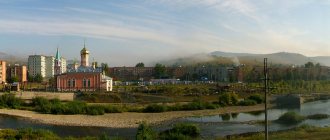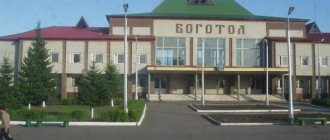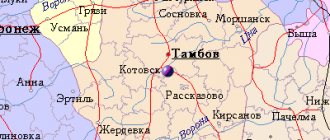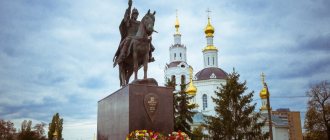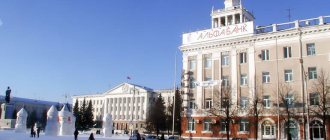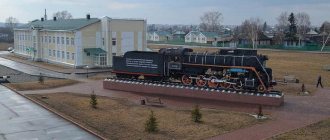The city of Chita is the capital of the Trans-Baikal Territory. The settlement is surrounded by wooded hills, and in the city itself two rivers, Ingoda and Chita, merge. In the east there is the Chersky ridge, and in the west there is the Yablonogo ridge, along which stretches a whole chain of Ivano-Arakhlei lakes, which are connected by channels.
In Chita itself there is also a small mountain - Titovskaya Sopka. It is believed that it is the remains of a volcanic structure that was formed during the Upper Paleozoic period.
Winter
The climate of Chita in winter is quite harsh; in January the average air temperature is -25.2 degrees. Although in 1892 the temperature was recorded at -49.6 degrees.
Winter lasts about 177 days, starting as early as mid-October and ending by April 10. There is little snow in the city, and thaws occur very rarely. It is in this locality that one can observe a temperature inversion, characterized by an increase in temperature at altitude, as a result of which smog is often observed in the city. February is characterized by strong winds.
Summer
The summer climate in Chita is characterized as warm. In the second half the rainy season begins. Summer in Chita is 15 days shorter than the calendar season, starting around June 7 and ending on August 22. In July, the average temperature is +18.7 degrees. However, in 1898, a maximum temperature was recorded - +43.2 degrees. By the way, this temperature is an absolute record for all of Siberia.
In recent years (since about 2013), the atmospheric temperature has been constantly recorded at + 30 degrees, but as soon as the sun sets, the temperature drops almost instantly. That’s why it’s cool at night in Chita even in summer.
Automobile highways
Federal highways pass through Chita:
- P297 “Amur” is a highway that has the status of an object of federal significance. The total length of the route is 2165 km. The road passes through the following regions of the Russian Federation: Amur Region, Trans-Baikal Territory, Jewish Autonomous Okrug, Khabarovsk Territory. The road surface of the route is asphalt.
- P258 “Baikal” is a federal highway, the total length of which is 1113 km. The route originates in Irkutsk and passes through Ulan-Ude. The final point of the route is the city of Chita. The road surface of the Baikal highway is asphalt concrete.
- A350 is a federal highway with a total length of 493 km. It is part of the Asian route AH6. The highway originates in Chita and passes through Zabaikalsk, Aginskoye, Borzya. The final point of the route is the Zabaikalsk checkpoint. The road surface of the route is gravel and asphalt concrete.
What locals say, reviews
The climate of Chita is not suitable for weather-sensitive people, because the city is located at a fairly high altitude, although in a basin. It is because of this that very large changes in atmospheric temperature occur throughout the day.
Despite the global warming trend, there can be frosts in Chita even in summer. In spring, too, frosts return on a regular basis. Therefore, local residents rarely risk farming.
According to reviews, the city is quite cold in winter, and in February the winds blow endlessly. Summer is very short, although warm, with large amounts of rainfall occurring towards the end of the season.
But there is also a positive point - there are a lot of sunny days in the city, almost like in Sochi. The city has 43% more sunny days than, for example, Moscow.
Chita
Video: Chita
History of Chita
Chita from a bird's eye view
The city got its name in honor of the small Chita River, which becomes shallower every year. The etymology of the word is not fully understood: perhaps it was borrowed from the languages of local tribes, where it means “birch bark rug”, “clay, black earth” or “fortress”. The first Russian settlements, winter quarters for travelers, appeared here in the middle of the 17th century. In 1687, a raft site appeared on the site of the modern city, where rafts were made for further rafting along the river. Ten years later, a church was built, permanent residents settled, and the settlement acquired the status of a settlement.
In 1711, the settlement was renamed the Chita fort - this was the name for the fortifications of this period, although in fact there were never protective walls around Chita. The population of the prison grew extremely slowly; by the time of the trial of the Decembrists there were only a few dozen residents. Paradoxically, the exile gave impetus to the development of the city - the military came here, trade and consumer services began to develop.
In 1851, Chita received city status; at the end of the 19th century, it turned into a major transport center thanks to the construction of the Trans-Siberian Railway. In the twentieth century, after the revolution, Chita for 3 years was the capital of an unrecognized state - the Far Eastern Republic, then became part of the USSR as the capital of the Chita district and region. In 2008, the region expanded its borders, and Chita became the center of the Trans-Baikal Territory.
Chapel in the name of St. Alexander Nevsky
Cathedral in the name of the Kazan Icon of the Mother of God
Pedagogical University
Museums of Chita
Due to the historical characteristics of the city, firstly, located close to the borders of the country, and secondly, from the places of serving sentences, there are especially many cultural institutions in Chita related to the history of law enforcement agencies. One of the main museums, ODORA, is opened in the House of Officers. Its 6 halls are dedicated to the history of the Great Patriotic War, including its Far Eastern pages. Some of the exhibits – tanks and large military equipment – are displayed in a nearby park, restored from pre-revolutionary photographs, a favorite recreation spot for townspeople. The museum operates on a non-standard schedule from 8 a.m. to 5 p.m., with a break from 12 p.m. to 1 p.m., and closed on Monday and Tuesday.
Thematically close to ODORA is the Museum of the History of Border Troops, founded in 2000. The Museum of the History of the Trans-Baikal Police is interesting with its exhibition of weapons seized from bandits. The Museum of the History of the Judicial System of the Trans-Baikal Territory is opened in the building of the Central Court.
Church of the Decembrists
Amurskaya Street
The Decembrist Church Museum, operating since 1985, is housed in a wooden church frame, the original building of the St. Michael the Archangel Church built in 1776. During his exile, the Decembrist Ivan Annenkov and the Frenchwoman Polina Goble, who followed him to Siberia, were married here. Another exile in the Decembrist case, Dmitry Zavalishin, also got married in the church. True, he found his wife right on the spot - she was the daughter of a high-ranking local official, the manager of the Chita volost. Zavalishin did not directly participate in the uprising, but sympathized with its ideas and was arrested shortly after the main trials of the instigators. His wife was subsequently buried near the walls of the church. Zavalishin, an active publicist, was tolerated in Chita until 1863, then he was sent into yet another exile in an unexpected direction: there was nowhere to go further to Siberia, so he was forcibly returned to Moscow.
The museum's exhibition includes portraits of exiles, their household items, shackles, furniture and books that belonged to them and their families, and the first editions of convict memoirs. The museum is open every day, except Mondays, from 10 to 18 hours, a ticket costs 130 rubles, for beneficiaries - 90. Every year on December 14, an Open Day is held in memory of the uprising on Senate Square. Every February the museum organizes Decembrist readings.
“Church of the Decembrists” is a branch of the Chita Museum of Local Lore. The most interesting part of the exhibition is objects of decorative and applied art from China and Japan, artifacts associated with the Decembrists, and edged weapons of the 19th century. The museum conducts interactive classes for primary schoolchildren and organizes regular excursions around the outskirts of Chita.
Science museums in Chita
The Mineralogical Museum is famous for samples of lava from Kamchatka volcanoes; the Paleontological Museum in the building of the Chita Technical University houses a collection of fossilized dinosaur eggs from the Gobi Desert and the skeleton of a woolly rhinoceros. The archaeological museum with rich local collections, collected mainly on the hills near Chita, is opened in the building of the state university. An important city site is the Anti-Plague Station Museum, which tells how this terrible disease was defeated.
Sights of Chita
A must-see is the Chita Datsan, a Buddhist religious building opened in 2010. In the bright building, designed in the traditional style of churches, prayer services, lectures are held, and religious holidays are celebrated.
The Chita hippodrome in the village of Zarechny is located half a kilometer east of the Anti-Plague Station. Local breeds of horses are bred here - short, covered with thick hair in the winter. Horse breeding in the region has reached such a level that horses are exported to Mongolia.
Architectural monuments
In Chita, two types of historical buildings have been preserved and are maintained in good condition: simple log buildings from the period of exile of the Decembrists and elegant stone and wooden houses of the early 20th century, designed in the Art Nouveau style. Among the first is the house of the wife of the Decembrist Naryshkin - a modest building in which the aristocrat herself ran the household.
An outstanding architectural monument of the Art Nouveau era is the estate of the photographer Konovalov, built in 1906. A two-story stone house with spiral volute decorations on top and a one-story wooden house have been preserved - it is easy to recognize by the same waves above the entrance. The Vtorov Passage of 1911 is a pre-revolutionary trading establishment, now occupied by all kinds of officials. The wooden house of Bergut is notable for its unique decor, not typical for Transbaikalia; the house of architect Nikitin is notable for its complexity of form. One of the most spectacular buildings in the city, the house of the Shumov merchants with richly decorated facades and domes, is now occupied by the FSB. Examples of wooden Art Nouveau are the Timakhovich house with carved fish and the Schilling house with complex decorative paneling.
Panorama of Chita
Botanical Garden of Chita
Due to uncontrolled logging in past years, the city lost its green belt. The Transbaikal Botanical Garden is trying to solve this problem: scientists are developing varieties of flowers and tree species that can withstand harsh climates and sandy soils. The entire collection, including the rose garden, which has been in bloom since April, is kept under glass. The cost of a tour of the greenhouses is 100 rubles. The garden is open on weekdays; on Saturdays, tours are by appointment only.
Chita Zoo
The small zoo began as a children's aquarium club; in 1994, the growing collection was placed in a separate building. Due to financial difficulties, the zoo followed the classic example of the British naturalist Gerald Durrell and assigned sponsor “guardians” to the animals - commercial enterprises, banks or government agencies. Not all specimens have been sorted out yet: there are free Himalayan bears and horned crows. A ticket to the zoo costs 200 rubles for adults, 50 rubles. – for children, additional services – pony riding and feeding of tame animals.
Excursions around Chita
- Many tourists travel from Chita to the village of Aginskoye, famous for its wooden architecture, visiting the main attraction - the Buddhist datsan. The cost of the trip is 990 rubles with an additional fee for lunch and entrance to the datsan.
- From 1,100 rubles you need to pay for a 220-kilometer trip to the Alkhanay National Park with a lama’s cell, Buddhist and shamanic shrines. The route is closed on certain summer days, when the risk of forest fires is especially high and the park is closed to the public.
- An excursion 300 km from Chita to Nerchinsk (from 1,300 rubles) is attractive with a visit to the Assumption Church of the 18th century and the palace of the Butin brothers - local merchants who built an estate in the Moorish-Gothic style in Siberia in the mid-19th century. Now it houses the Nerchinsk Local History Museum.
- An inexpensive but exotic route passes through the Ugdan datsan, located 20 km from Chita, to an ostrich farm.
Leisure
Despite the unfavorable environmental situation within the city, you can find places to relax outside of it. Alkhanay Park offers campsites, cottages and even yurts for long-term stays. The Chameleon rope park, located half an hour east of the center of Chita, conducts group lessons starting from 200 rubles for children over 5 years old, 400 rubles. – for teenagers, 600 rub. – for adults. The park area has been treated for ticks. “Chameleon” is the starting point for rafting, climbing, and orienteering competitions.
Near the southwestern borders of Chita is Titovskaya Sopka, a former volcano in which fragments of the bodies of a mammoth, a woolly rhinoceros, a prehistoric horse and even a bison were found. This is an interesting place for walking: it offers a picturesque view of the city, and primitive paintings are preserved on the rocks. From the east of Chita there are the slopes of the forested Yablonovy Ridge, which stretches across Transbaikalia for 650 km. 35 km north-west of the city there is a unique object on a global scale - Mount Vodorazdelnaya, or Pallas. It is only 1200 m high, the climb along a gentle slope stretches for 15-20 km and is not particularly difficult for a trained tourist, but this is not the value of the mountain. From the top of Vodorazdelnaya you can see streams flowing into the largest rivers of the Asian part of the country - Lena, Yenisei and Amur and feeding 5 seas with their waters.
Precautions for tourists
Preventive vaccinations against tick bites will not be superfluous, but it is still necessary to take all precautions - wear closed clothes in the forest, choose areas treated with poisons for walks. Swimming in the river within the city is strictly not recommended. Lake Kenon, near the western borders of Chita, next to the airport, is also a dubious place in terms of cleanliness, but there is a beach there and even fish can be caught - perch, chebak and carp.
When planning a trip, you need to remember the sharply continental climate with frosty winters and hot, but short, summers that end in early August. There are only 169 sunny days in the Chita year, almost all of them occur in spring and summer.
Accommodation
There are quite a lot of inexpensive accommodation options in Chita. Hotel "Arcadia" is located in the city center, a 10-minute walk from the railway station. At the hotel you can relax in the sauna with hot tub, and watch performances at the Regional Drama Theatre, which is a 2-minute walk away.
Other accommodation options that have earned positive reviews from travelers: the Panama City Hotel, where 2 hotel restaurants serve Chinese and European cuisine, the Gostiny Dom mini-hotel (pets are allowed), the Moulin Rouge Hotel, where you can relax in the bar and play billiards.
Booking.com
How to get there
Chita Airport receives flights from many Russian cities. Chita is a major transport center of the Trans-Siberian Railway; three federal highways pass through the city - to Ulan-Ude, Khabarovsk and Zabaikalsk.
